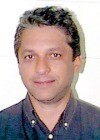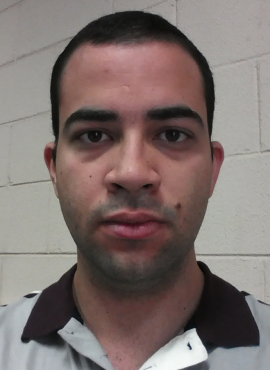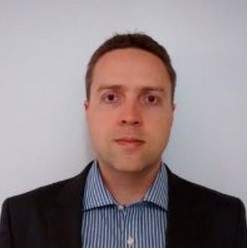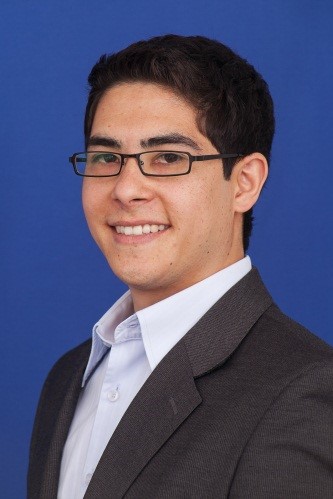Eventos
Frontiers of Engineering | Poster Sessions

About the Poster Session
Local: Imperial II Room
In this room will have space to display up to 70 posters together.
This room is located near the main room and will be use to the all coffee breaks.
Set up
The posters can be set at:
November 6th from 7:00 to 8:00am and stay fixed until the end of the event.
Local Structure for fixing the posters
Each structure has the width: 2,10cm high by 1.00 inches wide, so the print should be printed in the format 0.90 m wide by 1.00 m high.
It is not mandatory to print plotter. Can be printed on paper or vinyl drawstring at the top for attachment.
The text of the poster should be readable from a distance of at least 2m.
The postes You can fix your poster with self adhesive tape or cord that can be hung in the lamp structure.
Each poster will be identified with a label containing the name of the author.
Guidelines for Poster Presentation
To be sent
|
|
University of Campinas - Unicamp (Brazil) Poster: Interactive Machine Learning in Biomedical Image Analysis The way the human brain works is far from being modelled by machines. However, the superior ability of the machine to repeat tasks can avoid human errors due to fatigue or limited knowledge, when compared with the knowledge transferred to the machine. The diagnosis diseases by biomedical image analysis is an example that can benefit from machine learning. However, the traditional techniques do not take into account the benefits of using one or multiple users as a crucial part of the learning process. Interactive machine learning techniques do this by getting user participation to input information, evaluate the methods, and correct the results, improving the methods as they are developed. This work presents an integrated environment for interactive machine learning in the context of biomedical image analysis, where the user can interfere in the image segmentation, feature engineering, and design of a pattern classifier. It also discusses the challenges and perspectives to implement such a framework. |
|
University of São Paulo – USP (Brazil) Poster: Gene Networks and Network Medicine Our laboratory is involved in gene coexpression network (GCN) analysis in pediatric diseases, mainly in epilepsy and immunodeficiency syndromes. We have developed – in collaboration with Luciano da Fontoura Costa and Filipi Nascimento Silva, Instituto de Física da USP, São Carlos, SP, Brazil - computational tools for complex network visualization and analysis, e.g. community detection techniques for determining modular transcriptional repertoires, in order to go beyond modules and hubs. We further expanded this approach by encompassing microRNA and time-series data in GCN analysis. The key issue here is the network concept of disease: chronic non-communicable diseases are seldom determined by alterations in a single gene, but rather frequently derive from perturbations in intra and intercellular networks. This concept emerged from the field of systems biology and is rapidly becoming a new paradigm for investigating genomic and epigenetic mechanisms in health and disease. In epilepsy - a disease affecting more than 50 million people around the world and where 30% of the patients do not respond to the available antiepileptic drug - this approach is leading to the discovery of new multi-target drugs that will be probably more effective than the “silver bullets” sought at the beginning of medical genomics. These results will be presented and discussed in the symposium. |
|
|
|
D.Sc. University of São Paulo (USP), Brazil, 2013. Poster: RESEARCH IN MULTIPHASE FLOW APPLIED TO THE OIL INDUSTRY DEVELOPED IN THE THERMAL-FLUIDS ENGINEERING LABORATORY, EESC - USP. Multiphase flows are present in a wide range of industrial processes, especially in oil production. These flows are characterized by two or more components / phases flowing together in a single duct or pipe in geometric arrangements called flow patterns. Mathematical modeling and hydrodynamic stability of such flows are also in many cases an open problem and strongly depends on experimental measurements. Thus, the LETeF have excelled in the study of two-phase flows (liquid-liquid and gas-liquid) and three-phase flows (liquid-liquid-gas) with the performance of global measures of pressure drop and volumetric fraction as well as detailed measures, for example, velocity profiles, particles sizes (droplets and bubbles) and surface phase distribution. So, the laboratory has the state-of the art measurement equipment, as LaVision PIV and ORM, besides a homemade wire-mesh system. Annular duct and pipes of various dimensions are used in the experiments. The obtained results are used to improve the mathematical models to predict volumetric fraction, pressure drop and transition boundaries. The LETeF is also characterized by intensive research together with oil companies such as Petrobras, Statoil and BG. |
|
|
M.Sc. Federal University of Santa Catarina (UFSC), Brazil, 2006. Poster: SUBSEA EQUIPMENTS USED TO OPTIMIZE THE PRE-SALT PRODUCTION IN SANTOS BASIN. Special subsea equipments were developed to optimize the oil production in the Santos Basin Pre-Salt. Some of these equipments are the Wet Christmas Tree (WCT) with multiplexed control, the Intelligent Well Completion Valves (IWCV) and the Riser Sustentation Buoy (RSB). The WCT with multiplexed control allows a fast remote actuation, making it ideal for distant wells; it increases the number of WCT valves that can be operated remotely, reducing the necessity of ROV and letting the use of IWCVs; it enables the installation of more downhole sensors, improving the reservoir monitoring. With the IWCVs it is possible to control the flow in each reservoir zone, allowing the oil field selective management. The RSB uncouple the risers from the FPSO (Floating Production, Storage and Offloading Vessel), allowing the connection of well lines prior to the FPSO arrival on the location. When it arrives is necessary just to connect the risers top jumpers, increasing the oil production ramp-up. Furthermore the RSB is installed in 250 m depth, in a region not affected by sea waves and winds, which reduces the dynamic forces on the risers and improve their integrity. Another challenge is to guarantee that WCTs, IWCVs and RSBs materials are adequate to the subsea environment (depth, pressure, temperature, seawater) and oil contaminants (CO2, H2S and water), avoiding excessive corrosion and assuring the project life time. This poster will give more details about these equipments (IWCVs, WCT and RSB) and show how they are interconnected to ensure the oil production strategy in the Pre-Salt of Santos Basin. |
|
|
D.Sc.University of São Paulo (USP), Brazil, 2012. Poster: THE NEW FRONTIER OF OIL AND GAS: SUBSEA ENVIRONMENT Hydrocarbons still play an important role in the world energy matrix, representing more than half of the global energy source. The current offshore production supplies about a third of the overall world’s production. Considering that the new discoveries occur almost exclusively offshore, we conclude that offshore production is the new frontier of oil and gas. Many challenges must be overcome to ensure continuous, safe and economically viable production. The development of new and interdisciplinary technologies is in order: lighter and more resistant materials, new techniques for inspection of equipments and well logging, technique for improving the oil recovery in reservoirs, drilling techniques for ultra-deep wells and the concept of subsea factory. The main goal of the poster is to show for a diversified audience some of the great challenges inherent to subsea oil production as well as to present creative and interesting solutions. |
HOTEL PARADIES - HOW TO GET THERE




